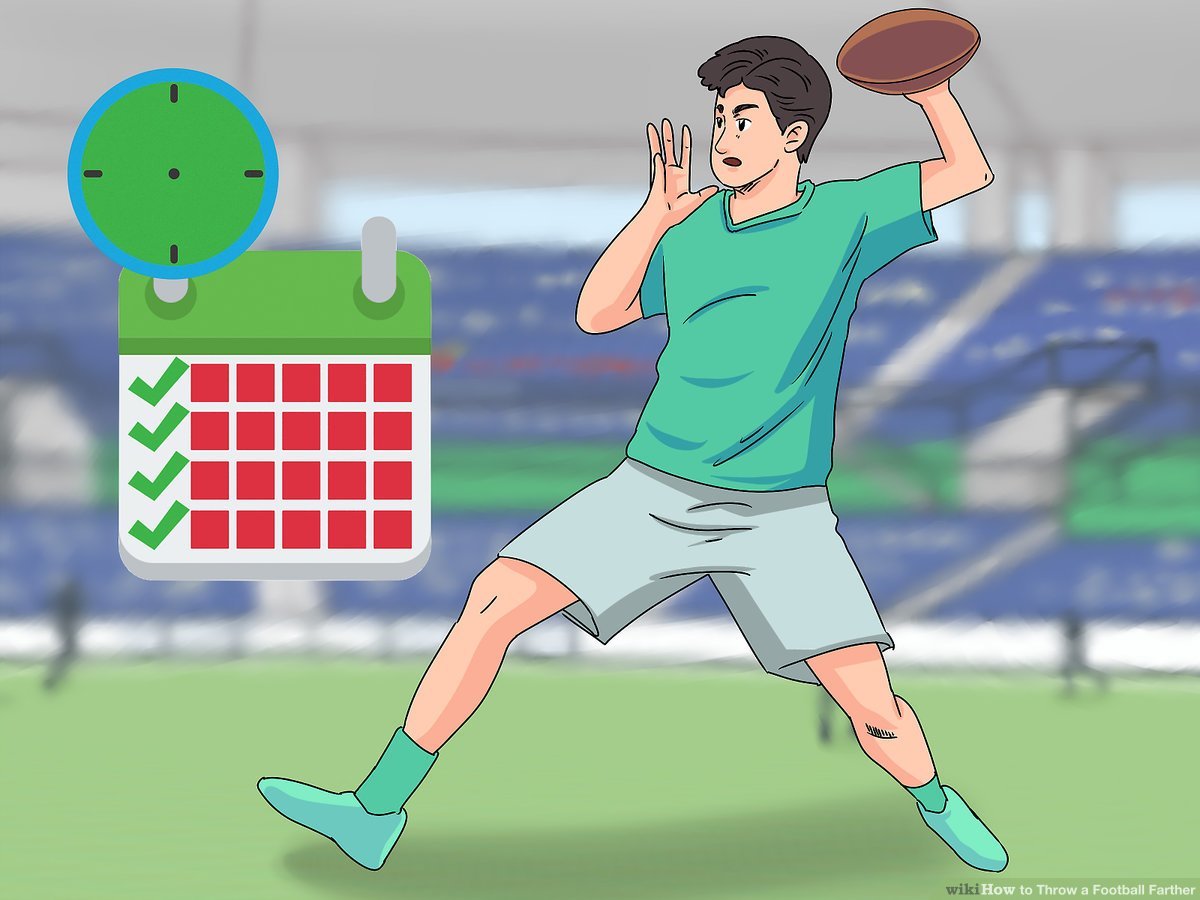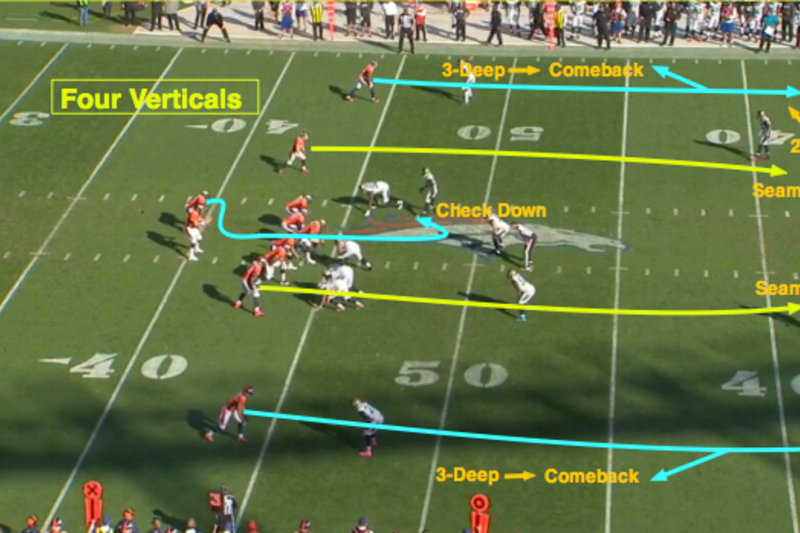Want to throw a football far? It’s all about technique and practice.
Throwing a football far is a skill many aspire to master, whether for fun or competition. It involves a mix of strength, form, and precision. Perfecting your throw can impress friends and boost your game. Learning the right techniques helps you gain control and power in your throws.
From grip to release, each step is crucial. This blog will guide you through essential tips and exercises. You’ll learn how to improve your throw distance and accuracy. Get ready to elevate your football throwing skills!
Choosing The Right Football
Choosing the right football is crucial for throwing far. A well-suited football can enhance your performance. It ensures better control and accuracy. Let’s explore key aspects to help you pick the right football.
Size And Weight
The size and weight of the football matter a lot. Different age groups need different sizes. Youth players use smaller footballs. Adults use standard size footballs. A proper weight ensures a good throw. It should feel comfortable in your hand. Not too heavy. Not too light.
Grip And Material
Grip and material affect your throw. A good grip prevents slips. Look for a football with a textured surface. It helps you hold it firmly. The material should be durable. Leather or composite materials are common choices. They provide a good grip and last long. Choose a football that feels right in your hand. This makes a big difference in your throw.
Mastering The Grip
Throwing a football far requires a strong and precise grip. The grip is the foundation of a good throw. If your grip is off, your throw will be too. This section will teach you how to master the grip with correct finger placement and hand positioning.
Finger Placement
Your fingers play a crucial role in gripping the football. Place your index finger near the tip of the ball. Spread your fingers across the laces. This helps in getting a good spin.
Use your middle finger for stability. It should rest on the laces. Your ring finger and pinky should be spaced out evenly. This gives you control. Avoid using just your fingertips. Use the pads of your fingers for a stronger grip.
Hand Positioning
Your hand position is just as important as your finger placement. Hold the ball with your thumb on the opposite side of your fingers. This creates balance. Your thumb should press lightly against the ball. This helps in control.
Keep your hand relaxed. A tense hand can lead to a weak throw. Hold the ball at a slight angle. The nose of the ball should point slightly downward. This helps in maintaining a straight throw.
Practice holding the ball in different positions. Find what feels comfortable for you. Everyone’s hand is different. What works for one may not work for another. Experiment and adjust as needed.
Perfecting The Stance
Throwing a football far requires more than just arm strength. Perfecting the stance is crucial to achieve maximum distance. A good stance provides balance and power. Let’s break down the key elements.
Feet Placement
Your feet placement is the foundation of a good throw. Stand with your feet shoulder-width apart. This gives you a stable base. Point your non-throwing foot towards the target. Your back foot should be slightly behind. This allows for proper weight transfer.
Example:
| Foot | Position |
|---|---|
| Non-throwing foot | Towards the target |
| Throwing foot | Slightly behind |
Body Alignment
Align your body with the target. Your shoulders should be square to the target. Hold the ball near your chest. Your elbow should be at a 90-degree angle. Keep your eyes focused on the target. This alignment ensures a straight throw.
Steps for proper alignment:
- Square your shoulders.
- Hold the ball near your chest.
- Keep your elbow at a 90-degree angle.
- Focus your eyes on the target.
Proper body alignment improves accuracy and distance. Practice these elements to perfect your stance.

Credit: www.youtube.com
Building Arm Strength
Building arm strength is key to throwing a football far. Strong arms help you throw with more power and accuracy. To achieve this, focus on exercises that build muscle and endurance in your arms.
Weight Training
Weight training is an effective way to build arm strength. Start with basic exercises like bicep curls and tricep extensions. Use dumbbells or barbells for these exercises. Aim for 3 sets of 10-12 reps for each exercise. Gradually increase the weight as you get stronger. Consistency is vital, so include weight training in your routine at least three times a week.
Incorporate shoulder presses to strengthen your shoulders. Strong shoulders support your arms during a throw. Use moderate weights and perform 3 sets of 10 reps. Remember to warm up before lifting weights to prevent injury.
Resistance Bands
Resistance bands are great for building arm strength. They provide constant tension on your muscles. This helps improve muscle endurance. Start with basic exercises like band curls and tricep extensions. Perform 3 sets of 15 reps for each exercise.
Use resistance bands for shoulder exercises too. Try band pull-aparts to strengthen your shoulders. Stand with feet shoulder-width apart. Hold the band in front of you with both hands. Pull the band apart until your arms are fully extended. Slowly return to the starting position. Perform 3 sets of 12 reps.
Resistance bands are portable, so you can exercise anywhere. Include them in your workout routine for variety and convenience.
Improving Throwing Mechanics
Improving your throwing mechanics can make a huge difference in how far you can throw a football. Small changes in your technique can lead to significant improvements in distance. Let’s explore some key aspects of throwing mechanics.
Wind-up Technique
The wind-up sets the stage for your throw. Start with your feet shoulder-width apart. Your knees should be slightly bent. Hold the football near your chest. Keep your elbows at a right angle. Rotate your torso to the side. This motion helps build momentum. Keep your non-throwing hand pointed towards your target. This helps with aim. Practice this motion until it feels natural.
Follow Through
The follow through is crucial for a long throw. After releasing the ball, your throwing arm should continue moving forward. Your hand should end up near your opposite hip. This motion ensures maximum power and accuracy. Keep your eyes on the target. Your body should naturally rotate towards the target. Practice this step to make it a habit.
Increasing Throwing Speed
Increasing the speed of your throw is crucial for achieving long-distance passes. A faster throw allows the football to travel further and reduces the chance of interception. Here are some tips for increasing throwing speed.
Quick Release
A quick release is vital. It reduces the time defenders have to react. To get a quick release:
- Hold the ball near your chest.
- Use your non-throwing hand to support the ball.
- Keep your elbow at a 90-degree angle.
Practice these steps to make them second nature. Consistency is key.
Arm Motion
Your arm motion greatly affects your throw. Focus on these aspects:
| Aspect | Tip |
|---|---|
| Wind-up | Keep it short and compact. |
| Follow-through | Extend your arm fully and aim at your target. |
Work on a smooth motion. This helps maintain control and power.
Using Proper Footwork
Using Proper Footwork is essential to throw a football far. Having the right stance and movement can make a significant difference in your throw. Good footwork ensures that you transfer maximum power from your legs to the throw. Let’s break down the important aspects of footwork with a focus on step timing and pivot techniques.
Step Timing
Step timing is crucial for a powerful throw. Begin by positioning your feet shoulder-width apart. This provides a stable base. As you prepare to throw, take a step with your non-dominant foot. This step should be in the direction of your target. Ensure that this step is neither too short nor too long. A small step may limit power, while a long step can throw off your balance.
The timing of this step is key. As your foot lands, your throwing arm should be coming forward. This coordinated movement helps to generate force from your legs through to your upper body.
Pivot Techniques
Pivoting is another important aspect of footwork. After stepping with your non-dominant foot, pivot on the ball of your back foot. This pivot allows your hips to rotate smoothly. Proper hip rotation adds power and distance to your throw.
Keep your back foot light and pivot quickly. Avoid planting your foot flat on the ground. A flat foot can restrict your movement and reduce your throw’s power.
Here’s a simple table to summarize the key points:
| Footwork Aspect | Key Points |
|---|---|
| Step Timing |
|
| Pivot Techniques |
|
Focusing on step timing and pivot techniques will help you throw a football farther. Practice these techniques to improve your footwork and see the difference in your throws.

Credit: www.youtube.com
Practicing Regularly
Practicing regularly is crucial for throwing a football far. This habit builds muscle memory and enhances your technique. By dedicating time each day, you will see significant improvements.
Drill Routines
Establishing drill routines helps in maintaining focus. Here are some effective drills:
- Warm-up throws: Start with short, gentle throws to loosen muscles.
- Long throws: Gradually increase the distance of your throws.
- Footwork drills: Practice stepping into your throw correctly.
- Target practice: Aim for specific targets to improve accuracy.
These routines should be repeated daily to embed proper technique.
Consistency
Consistency is the key to progress. Follow these steps to stay consistent:
- Set a schedule: Choose specific times for practice.
- Track progress: Keep a journal of your throwing distance.
- Stay motivated: Reward yourself for reaching milestones.
Maintaining consistency ensures steady improvement. Be patient and persistent.

Credit: www.wikihow.com
Frequently Asked Questions
How Can I Improve My Football Throwing Distance?
To improve throwing distance, focus on your grip, stance, and arm strength. Practice regularly and build upper body strength.
What Exercises Help Throw A Football Farther?
Exercises like push-ups, pull-ups, and shoulder presses help strengthen your muscles. They are essential for throwing farther.
How Should I Grip A Football For Distance?
Grip the football with your fingers spread out. Ensure your thumb is underneath, and your index finger is near the tip.
Does Body Position Affect Football Throwing Distance?
Yes, body position is crucial. Keep your feet shoulder-width apart and rotate your hips for maximum power.
Conclusion
Throwing a football far takes practice and technique. Focus on your grip. Use your body to generate power. Keep your arm relaxed and your movements smooth. Consistency is key. Practice regularly to see improvement. Proper warm-up helps prevent injuries. Watch videos of skilled players.
Learn from their techniques. Stay patient and keep trying. With time, you’ll see progress. Enjoy the process and have fun!





